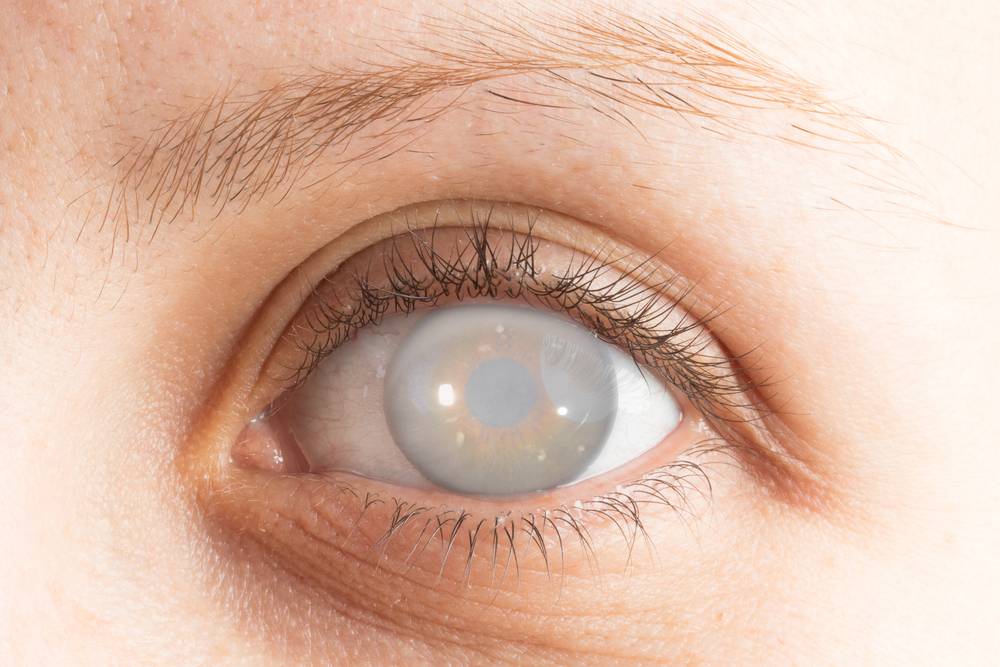A cataract is a cloudy area in the lens of the eye. Cataracts are very common and can occur in one or both eyes. They may develop slowly or quickly. If left untreated, cataracts can lead to blindness. In this blog post, we will discuss congenital cataract treatment. We will go over the different treatment options available, and how to choose the best option for your child.
What Is a Congenital Cataract?
 It is an opacity of the lens that is present at birth or develops in infancy. It can occur in one or both eyes and may be part of a syndrome. If it is not treated, congenital cataracts can cause amblyopia (lazy eye). This is why early diagnosis and treatment are important.
It is an opacity of the lens that is present at birth or develops in infancy. It can occur in one or both eyes and may be part of a syndrome. If it is not treated, congenital cataracts can cause amblyopia (lazy eye). This is why early diagnosis and treatment are important.
A congenital cataract is described as a clouding of the eye’s lens, which is present at birth or develops in early infancy. There are many different types of congenital cataracts, which can be classified based on their location, appearance, and/or associated conditions. Some common are:
- Nuclear cataracts, which form in the central part of the lens;
- Cortical cataracts, which form on the outer edge of the lens;
- Subcapsular cataracts, which form under the lens capsule (the clear covering that surrounds the lens); and
- Polar cataracts, form near the equator of the lens.
Most congenital cataracts are non-syndromic, meaning they occur in isolation without being associated with any other medical condition. It is important to get treatment for congenital cataracts as soon as possible, as they can cause amblyopia (lazy eye) if left untreated. Early diagnosis and treatment are essential in preventing vision loss from congenital cataracts.
What Are Some Treatment Options?
If your child has congenital cataracts, there are a few different treatment options available. Some common congenital cataract treatment options are as follows:
Surgery
This is the most common treatment option for congenital cataracts. Surgery involves removing the cloudy lens and replacing it with a clear artificial lens. The process is usually quick and relatively painless. In most cases, it can be performed on an outpatient basis, which means your child won’t have to stay in the hospital overnight.
After surgery, your child will need to wear glasses or contact lenses to help improve their vision.
In some cases, a second surgery may be needed to further improve vision. Cataract removal surgery is generally safe, but as with any surgery, there are some risks involved.
Intraocular Lens Implants (IOLs)
IOLs are a type of artificial lens that can be used to treat congenital cataracts. In this procedure, the cloudy lens is removed and replaced with an IOL. IOLs are usually made of silicone or acrylic.
IOLs can be placed in the eye during cataract surgery or as a standalone procedure. In some cases, a second surgery may be needed to place the IOLs. This type of congenital cataract treatment is usually only recommended for children who are unable to have cataract surgery.
Corticosteroids drops
These drops can help to shrink the size of the cataract and improve vision. It is important to note that they will not completely remove the cataract. In some cases, surgery may still be necessary. Many times, the use of these drops can help to delay or avoid surgery altogether. In fact, some studies have shown that they can be effective in up to 70% of cases.
Patching
This treatment option involves placing a patch over the eye that is not being used in order to strengthen the eye that is patched. The most common type of patching is called occlusive patching and it involves using an adhesive bandage or hypoallergenic tape to secure the patch over the affected eye.
Another type of patching, called non-occlusive patching, uses a special contact lens to cover the eye. This type of patching is often used in cases where occlusive patching is not possible or tolerated. Patching is typically done for several hours each day and the amount of time that the eye is patched will depend on the severity of the cataract.
Contact lenses
 Contact lenses for congenital cataract treatment are an option for some people. There are different types of contact lenses and the kind that is right for you depends on the severity of your condition and other factors. Your eye doctor can help you choose the right type of lens and fit them to your eyes.
Contact lenses for congenital cataract treatment are an option for some people. There are different types of contact lenses and the kind that is right for you depends on the severity of your condition and other factors. Your eye doctor can help you choose the right type of lens and fit them to your eyes.
Overall, these are the most common types of congenital cataract treatments. If you have any questions about which treatment is right for you, be sure to talk to your doctor. They will be able to help you make the best decision for your individual case.
Treating a congenital cataract is important because if left untreated, it can lead to serious vision problems. So, if you or your child has been diagnosed with a congenital cataract, be sure to talk to your doctor about treatment options right away.
Is Congenital Cataract Treatable?
The short answer is, “Yes, congenital cataracts are treatable.” However, the treatment options available will depend on the severity of the condition and the age of the child. In some cases, surgery may be necessary to remove the cataract and improve vision. In other cases, glasses or contact lenses may be all that is needed.
If your child has been diagnosed with a congenital cataract, the first step is to meet with a pediatric ophthalmologist. This specialist will be able to determine the best course of treatment for your child based on the severity of the condition. If surgery is necessary, they will refer you to a pediatric eye surgeon.
The good news is that, with early diagnosis and treatment, most children with congenital cataracts will be able to achieve normal vision. If you have any concerns about your child’s vision, be sure to talk to your pediatrician or make an appointment with a pediatric ophthalmologist. Early intervention is key to ensuring the best possible outcome.
When Should A Congenital Cataract Be Operated?
Generally, a congenital cataract should be operated on as early as possible to allow the eye and brain to develop properly. Early surgery also decreases the risk of amblyopia, or “lazy eye.” If left untreated, amblyopia can lead to permanent vision loss in the affected eye.
But it should be operated on only when the doctor thinks that it can improve the vision. Because this type of cataract is present at birth, it may not be fully developed and mature enough to be removed. If surgery is performed too early, the cataract may grow back or another one may develop in its place.
The decision of when to operate should be made by a team of doctors that includes a pediatric ophthalmologist, who specializes in children’s eye problems, and a pediatric surgeon. This team will take into account the severity of the cataract, the child’s age, and other factors.
How Successful Is Congenital Cataract Surgery?
The success of congenital cataract surgery depends on many factors. The type of cataract, the severity of the cataract, and the age of the child are all important factors. In general, though, surgery to treat congenital cataracts is successful in most cases.
According to studies, the overall success rate for congenital cataract surgery is about 95%. This means that, of all the children who have surgery to treat their congenital cataracts, 95% will see an improvement in their vision. In some cases, surgery may even completely correct a child’s vision.
Of course, no surgery is without risk. The most common complication of congenital cataract surgery is a condition called posterior capsule opacification (PCO). PCO occurs when the back of the eye’s lens becomes cloudy. This can happen even if the surgery was successful in treating cataracts.
Other risks might include:
- Inflammation in the eye
- Bleeding in the eye
- Infection
- Swelling of the retina
- Detachment of the retina
Most of these complications are rare and can be treated. With proper care, most children who have congenital cataract surgery will go on to have good vision.
How To Choose The Right Treatment For You?
 Choosing the right treatment for your congenital cataract can be a daunting task. There are many different types of treatments available, and it is important to select the one that is best suited for your individual case. Here are a few tips to help you choose the right treatment for you:
Choosing the right treatment for your congenital cataract can be a daunting task. There are many different types of treatments available, and it is important to select the one that is best suited for your individual case. Here are a few tips to help you choose the right treatment for you:
- Talk to your doctor about your options. Your doctor will be able to offer guidance and advice on the best course of treatment for your particular case.
- Consider your lifestyle and needs. Different treatments have different risks and benefits, so it is important to select a treatment that is right for you and your lifestyle.
- Make sure you are comfortable with the treatment plan. Be sure to ask questions and get all the information you need before making a decision.
Once you have selected the right treatment for you, it is important to follow your doctor’s instructions and stick to the plan. With proper care and treatment, most people with congenital cataracts can lead normal, healthy lives.
Conclusion
In conclusion, congenital cataract treatment is a highly effective way to improve vision and quality of life for those affected by this condition. There are a variety of treatment options available, and the best option for each individual will depend on the severity of their cataracts and their overall health.
If you or your child has been diagnosed with congenital cataracts, be sure to talk to your doctor about all of the treatment options available. With early intervention and proper care, most people with this condition can achieve excellent vision and lead normal, healthy lives.
It is a safe and painless procedure. At EyeMantra we have a team of experienced eye surgeons, who will be happy to answer any questions on cataract surgery, cataract surgery cost, cataract lens cost for different cataract surgery types- Phacoemulsification, MICS & Femto Laser Cataract . Call us at +91-9711116605 or email at [email protected] for inquiries.


